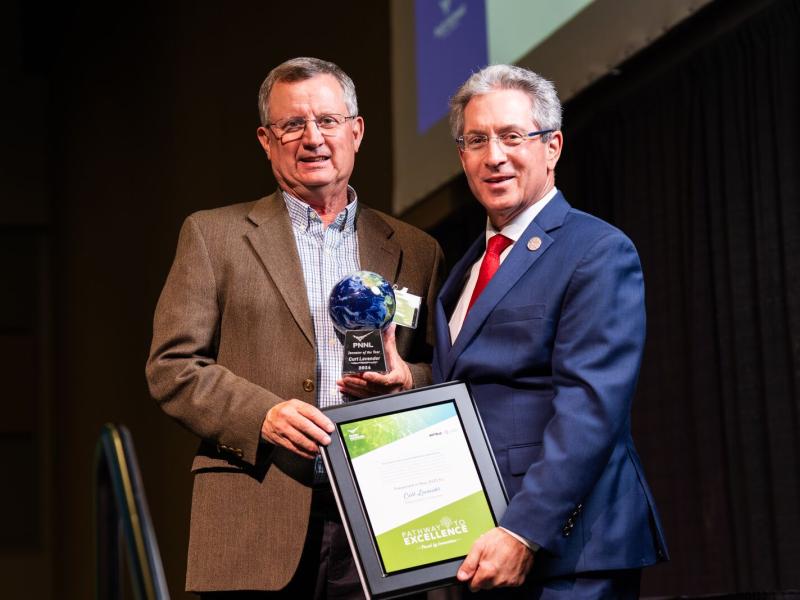
ShAPE:
Shear Assisted Processing
and Extrusion
ShAPE:
Shear Assisted Processing
and Extrusion
A new flagship technology for
American manufacturing
A new flagship technology for
American manufacturing
PNNL's ShAPE 2 extrusion system.
(Photo courtesy of Andrea Starr | Pacific Northwest National Laboratory)
ShAPE is a perfect illustration of the Smart Advanced Manufacturing (SAM) innovations at Pacific Northwest National Laboratory (PNNL). Typically, metal extrusion involves the use of external heat to soften or homogenize the feedstock before it is pressed through the die. By contrast, the patented, R&D 100 award–winning ShAPE technique involves the use of a shearing action at the face of the billet to locally heat and plasticize the feedstock material before it is pressed through a shaping die. ShAPE—which is capable of both direct and indirect extrusion—imparts significantly more deformation into the material than does conventional extrusion, offering a number of unique advantages.
ShAPE has broad industrial applications, including in automotive manufacturing, industrial processes, electricity generation and transmission, buildings and construction, oil and gas exploration, aerospace, and national security. PNNL has already demonstrated the technology’s performance and cost advantages in a number of critical energy sector use cases.
Producing unique properties and superior materials
The extreme deformation imparted by ShAPE creates products that often cannot be created through conventional manufacturing, opening the door to domestic manufacturing of products with superior performance or properties in a number of critical sectors.
Upcycling low-cost materials and reducing critical material use
The same deformation that allows ShAPE to create superior products allows it to use lower-cost, domestically sourced alternative feedstocks to create high-performance products that would typically require critical materials or other higher-cost feedstocks—advancing both cost efficiency and supply chain stability.
Enhancing process efficiencies
Not only can ShAPE create high-performance components using lower-cost materials—it creates process efficiencies along the way. ShAPE can extrude complex aluminum and other alloy systems up to 10 times faster than conventional extrusion. Furthermore, by eliminating the need for separate heat treatment steps, such as billet homogenization, ShAPE reduces manufacturing cycle times, energy use, facility footprint, and capital expenditure.
PNNL's ShAPE capabilities
PNNL’s SAM program capabilities include multiple ShAPE machines, each tailored to demonstrate the ShAPE technology at a particular scale or for a particular purpose.


